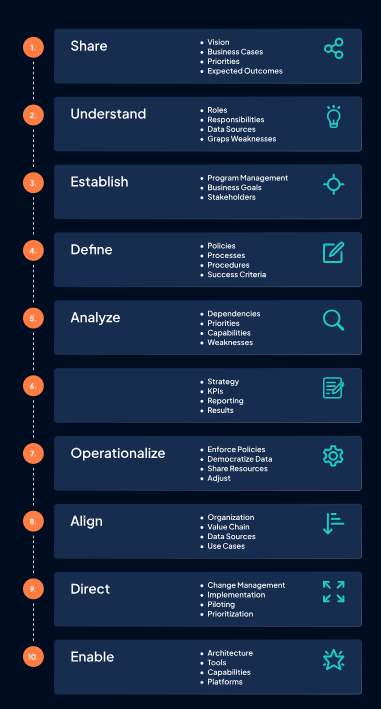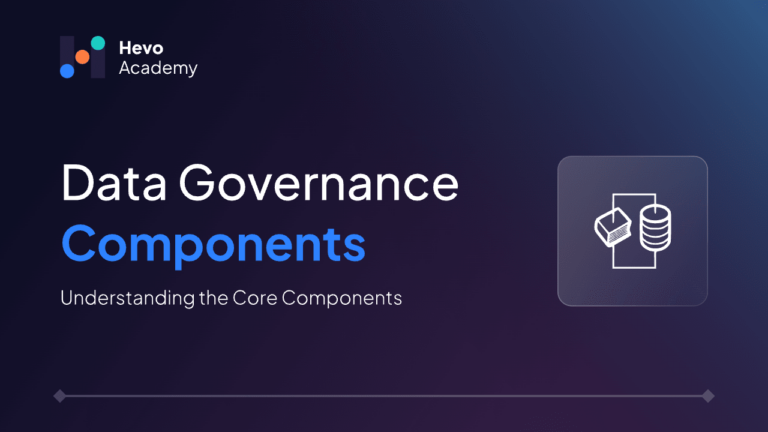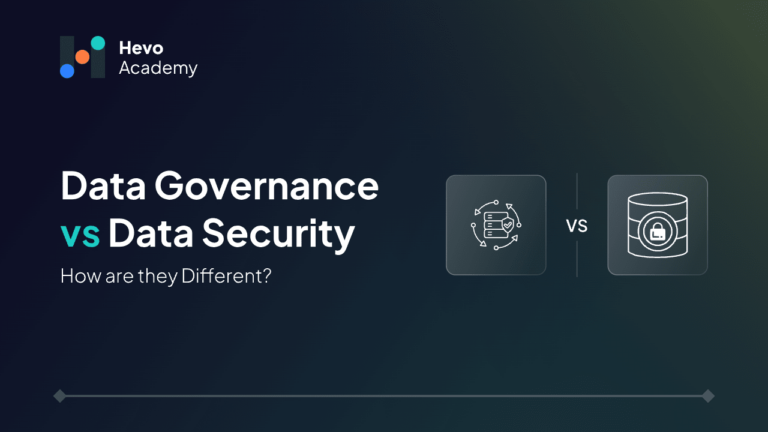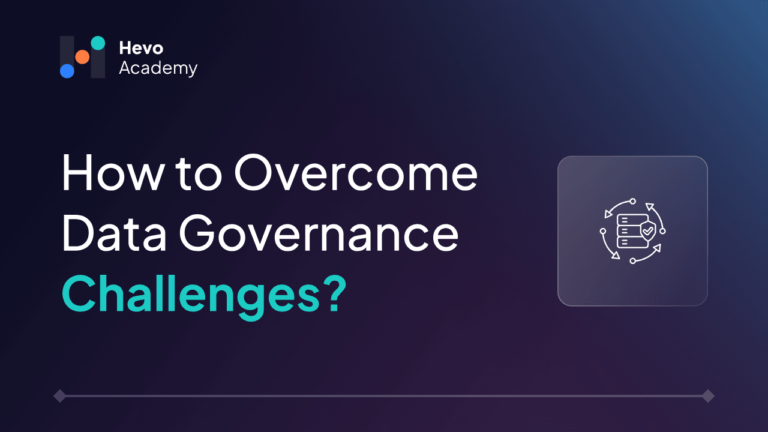In today’s complex world of data, there needs to be a Data Governance Roadmap for any organization that wants its data assets to reach their full potential. This strategic plan identifies the policies, procedures, and roles needed for Data Quality, Data Security, and Data Compliance. A data governance roadmap is a strategic plan that helps improve data quality, manage risks, and promote ownership. It acts as a reference point when implementing data ventures in an organization to achieve organizational goals and objectives, thereby improving decision making thus enhancing organizational productivity. In the current world where data is a valuable resource, a good Governance roadmap is defensive and ensures full optimization of data resources for the organization’s growth and sustenance.
Table of Contents
What is a Data Governance Roadmap?
A Data Governance Roadmap is an effective plan that gives a format for how the data of an organization will be governed, protected, and maintained to the desired standards and standards of the country in which it is operating. Comprise elements of defining vision, business cases, planned objectives, and intended results. According to the roadmap, there is a clear definition of roles and responsibilities, data sources, and gaps and strengths in the existing data management context. It also incorporates business-centered standards of data governance, that is, the correlation of data management activities to organizational objectives and user requirements.
Some of the activities that when followed in the Data Governance roadmap are:
- Share: Communicate insights and lessons learned to foster a culture of collaboration.
- Understand: Key strategy includes the articulation of the vision, business cases, priorities, and the expected outcome.
- Establish: determine roles, responsibilities, and data necessary for successful management.
- Analyze: Identify loopholes in current practices in order to find what needs enhancing.
- Define:That means to establish well-defined requirements and guiding principles of operational, tactical, and strategic data management.
- Measure:Make sure that all the work defines success, goalposts and targets, as well as how the performance will be assessed.
- Operationalize: Ensure compliance with the rules and spread the usage of data within the company.
- Align: Be sure that its implementation is strictly connected with the realization of the key organizational goals.
- Direct: Supervise implementation, change, and pilot projects.
- Enable: Ensure the availability of tools, domains, and capabilities that inculcate success into an organization.

Looking for the best ETL tools to connect your data sources? Rest assured, Hevo’s no-code platform helps streamline your ETL process. Try Hevo and equip your team to:
- Integrate data from 150+ sources(60+ free sources).
- Risk management and security framework for cloud-based systems with SOC2 Compliance.
Why Does an Organization Need a Data Governance Roadmap?
Information is one of the critical commodities in an organization but if not well handled can turn into an incurable ailment. A data governance roadmap ensures that data that is collected is consistent, valid, and credible data, meaning that an organization is in a position to make sound decisions.In the same respect, a roadmap enhances efficiency because typical procedures are set out, minimizing mistakes and repetition. People maintenance creates confidence and responsibility, and for this process, employees understand their responsibilities to process data.
In the emergence of data governance, especially in the present fast-paced world of information, a data governance roadmap is, therefore, another necessity for any organization that wants to effectively manage its data resources. Such a framework enables better coordination of data-related activities with organizational goals and priorities while maintaining quality and compliance with data protection standards.
By strictly defining duties, the roadmap of the organization’s processes helps to make decisions and find out that some existing practices are still non-optimal. Besides, it is more structured to improve the accuracy of data collected, minimizing risk levels and improving a culture of accountability. Lastly, a data governance roadmap leads an organization in enabling the data to be a strategic asset in terms of operations and sustainable development.
All in all, data governance infrastructure is crucial to meet a company’s data management needs, regulatory requirements, and advance its performance.
Step-by-Step Guide to Creating a Data Governance Roadmap
The general concept of developing a roadmap for data governance might seem challenging for those who are just starting. But, relying on a plan and proceeding step by step helps develop a systematic strategy to organize your organization’s data. Well, let us get down to business with simple steps that would guide you on how to go about the process.
1. Define Your Business Needs:
When you are planning your strategy of data management, synchronize it with the rest of your strategic plan. What is your interest: data quality, compliance or innovation,Understanding the “why” will be useful throughout the entire process.
2. Find Out Who Needs the Data:
Second, one has to recognize who owns data across the organization. This includes business managers, IT departments, data custodians, data stewards, and even lawyers. It helps involve them early enough in the process and make sure everyone knows the value of data governance. A data governance policy is crucial to safeguard your data.
3. Evaluate Your Present Use of Data:
Find out how you are handling your data at the moment. Does it follow a certain architecture, and is it easily searchable, or is it spread across different systems? Through this assessment, you’ll learn the things that you lack or need improvement on so that you are aware of what to work on.
4. Define Data Governance Policies:
There should be set down guidelines on how the information should be gathered, managed, retrieved, and utilized. This should entail the safety of data and information, including the protection of its privacy up to the employee’s behavior in handling the information. These ones are among the most important policies, which can serve as the backbone of your governance activities.
5. Set Roles and Responsibilities:
Everyone agrees that data governance should be accountable. Clarify who is in charge of data from low levels to the top levels of the organization. For instance, in an organization, you may decide to assign some data stewards per department to enhance the standardization of the approach.
6. Utilize Made Up Tools and Techniques:
However, many of the governance policies that you intend to institute will require the right tools to facilitate their implementation. This might encompass DMPs, monitoring systems, or the application of an algorithm to make selective data handling adhere to the rules you have set out.
7. Monitor and Evolve
Data governance is not an activity to be performed once. Updating and referring to the roadmap at least once a year is extremely crucial because of the emergence of new technologies, new laws, and new needs by the business.
Common Challenges Faced While Creating a Data Governance Roadmap
Creating a sound data governance strategy is premised on the need to manage data well in organizations, which has its Here are some common hurdles faced during the process:
1. Understanding the Business Value of Data Governance: Most organizations prioritize quick access to data but do not know the importance of getting better governed and quality data. Data management guarantees that data is correct, dependable, and appropriately managed, which is a factor that is central to achieving knowledgeable decisions.
2. Perception That IT Owns the Data: One myth is that IT departments are the ones who own data and are conversely solely responsible for data governance. In actuality, data belongs to business segments such as sales, marketing, or finance. Such a misunderstanding can serve as an obstruction to the practice of data governance. Particularly important is choosing the data stewards who work with the IT team to control access to data properly.
3. Limited or Misallocated Resources: After governance gets taken seriously, it becomes difficult to look for the right people for certain positions such as Data Owner and Data Steward. These roles are essential for keeping data governance going and often organizations have challenges looking for or developing talented people for the tasks.
4. Siloed Data: This dilemma is common among many organizations since distinct technologies and tactics are used to gather data. To some extent, breaking down these silos is significant for building a coherent strategy of data governance. If the metadata is handled effectively, the organization can easily relate different types of information to enhance the flow of information.
5. Poor Data Quality and Lack of Trust: Data governance is well performing when the quality of the data being governed is good. In turn, low quality data results in mistrust in the data collected hence impacting negatively on data analysis decisions made. Setting up standards with which to assess the quality of the data is important in enhancing credibility in the data.
6. Poor Data Context: Thus, it is even possible to enrich the account with highly valuable data, yet when managing this data, users fail to recognize the needed patterns or, at least, proper context. The other cases include misunderstandings that may happen due to the use of confusing labels or definitions of the used data. To cultivate that confidence, it is necessary to constantly remind users of what the various data elements mean and where they are coming from.
7. Lack of Data Control: When IT exercises too much control, the flow of data to people who need it is greatly reduced, reducing the chances of getting insights from the large amount of data available. Data governance is about facilitating the right people’s access to the right data in a secure manner, not restraining it. That means that organizations can never be fully secure and, at the same time, be fully accessible.
To read more about data governance challenges you can read this blog on How to Overcome Data Governance Challenges.
Conclusion
In conclusion, the Data Governance Roadmap is crucial for any organization that aims to have proper management of its data resources. It brings the adherence of data management to the business strategies, supports compliance, and improves data quality, security, and availability. By creating roles, policies, and standards for data, it assists in eradicating data silos, enhancing data credibility, and increasing responsibility. This reveals that even if such challenges as resource allocation and data control are probably the most difficult to overcome, a clear roadmap thus promotes improved decision-making, enhanced management of risks, and, eventually, an overall improvement in organizational efficiency.
The updating of the roadmap makes sure it remains up-to-date, as this helps the organization achieve its goal of making data a strategic asset for the organization in the future. A successful Data Governance Roadmap leaves no doubt about the adage that data must be accurate and the responsibility is equally distributed across different departments. Aims at dismantling myths such as thinking it is the sole responsibility of IT to control and own the data, and fosters collective accountability.
Data migration plays a vital role in implementing a strong data governance policy. Sign up for Hevo’s 14-day free trial and experience seamless data integration without any worries!
FAQs
1. What is a data governance roadmap?
An effective Data Governance Roadmap is an action plan that defines the ways an organization will protect, maintain and leverage its data resources. It provides the definition of policies, roles, responsibilities, and processes needed to attain, maintain, and validate data quality, security, and compliance. This roadmap provides a framework for organizing data governance initiatives with respect to organizational goals.
2. What are the 5 levels of data governance?
The 5 Levels of Data Governance represent stages of maturity in governance practices. They include: Ad Hoc, where governance is informal; Reactive, addressing issues as they arise; Proactive, establishing structured policies; Managed, integrating governance into daily operations; and Optimized, where governance is refined and drives business value continuously.
3. What are the four phases of data governance?
The Four Phases of Data Governance are: Scope is (a) Planning, where objectives and stakeholders are identified; (b) Implementation, where the governance framework is enacted; (c) Operationalisation, where the governance processes are incorporated into the organizational workflow, and finally, (d) Monitoring and Improvement, which examines past performance, address issues, and refines the governance practices to better align the organizations practice with its objectives.
4. What are the three pillars of data governance?
The 3 Pillars of Data Governance consist of People, which defines roles and responsibilities across departments; Processes, which establish the policies and procedures for managing data; and Technology, which involves the tools and systems that support data governance efforts, enhancing automation, security, and monitoring capabilities for effective data management.






